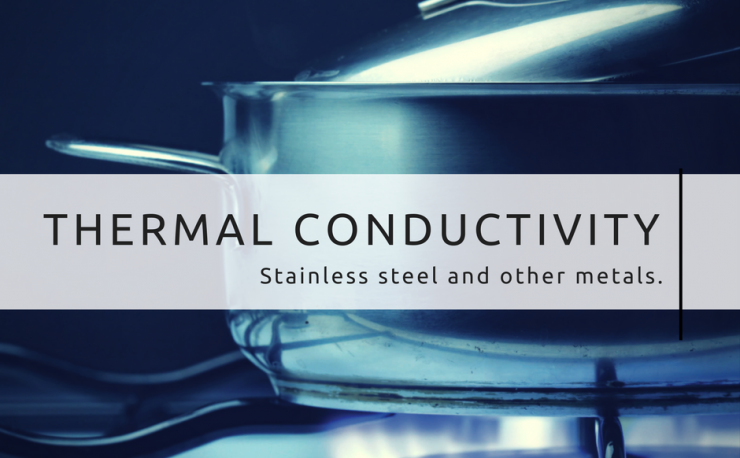
It is common belief that the metals are conductors of heat. But not all metals are good conductors in the same way. The characteristic depends on the type of metal.
The thermal conductivity of materials.
What can we infer from the following table? The values of thermal conductivity of various metals.
| METALS | Conductivity /W/(cm °C) |
| Aluminum | 2,4 |
| Copper | 4,0 |
| Gold | 3,2 |
| Silver | 4,3 |
| Iron | 0,8 |
| Steel | 0,8 |
| Brass | 1,1 |
1 W/(cm·°C) is the energy in joules that manages to overcome the distance of 1 cm through the section of 1 cm2.
Here are some below:
- Steel has a lower conductivity
- Aluminum is a better conductor than the brass an steel
- Copper has much higher performance than
How to see the difference? For example, thanks to an experiment with a copper bar.
But here’s a piece of trivia.
What is the material with higher thermal conductivity? The diamond. The value of conductivity ranges from 9 to 26 units in table. In fact, this makes it extremely cold to the touch. Instead, among the metals the alloy at 72% silver and 28% copper (CuSil) conducts heat better than the silver only.
Find our webshop.
Click on the link below to access on our web shop. You can choose the most suitable items to your customers needs.




Very educative post, learned a lot. So glad I discovered your
blog, and was able to learn new things. Keep posting articles,
it is really helpful.
King regards,
Abildgaard Cannon
Thermal conductivity (often expressed as k, λ, or κ) refers to the intrinsic ability of a material to transfer or conduct heat. It is one of the three methods of heat transfer, the other two being: convection and radiation. Heat transfer processes can be quantified in terms of the corresponding rate equations. The speed equation in this mode of heat transfer is based on Fourier’s law of heat conduction.
https://www.thermtest.se/
Thanks for the interesting deepening about this theme! We are always happy to receive your feedback!
Silvia – Staff Inox Mare